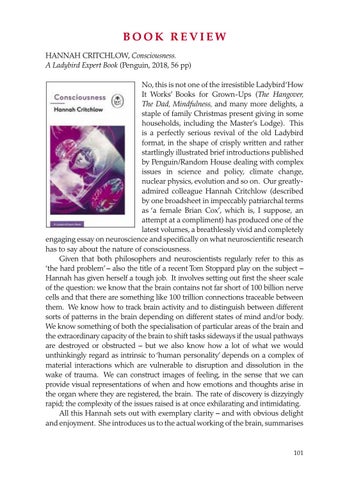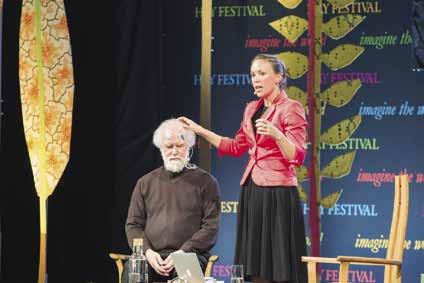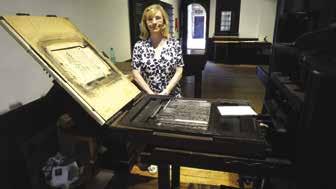BOOK REVIEW HANNAH CRITCHLOW, Consciousness. A Ladybird Expert Book (Penguin, 2018, 56 pp) No, this is not one of the irresistible Ladybird ‘How It Works’ Books for Grown-Ups (The Hangover, The Dad, Mindfulness, and many more delights, a staple of family Christmas present giving in some households, including the Master’s Lodge). This is a perfectly serious revival of the old Ladybird format, in the shape of crisply written and rather startlingly illustrated brief introductions published by Penguin/Random House dealing with complex issues in science and policy, climate change, nuclear physics, evolution and so on. Our greatlyadmired colleague Hannah Critchlow (described by one broadsheet in impeccably patriarchal terms as ‘a female Brian Cox’, which is, I suppose, an attempt at a compliment) has produced one of the latest volumes, a breathlessly vivid and completely engaging essay on neuroscience and specifically on what neuroscientific research has to say about the nature of consciousness. Given that both philosophers and neuroscientists regularly refer to this as ‘the hard problem’ – also the title of a recent Tom Stoppard play on the subject – Hannah has given herself a tough job. It involves setting out first the sheer scale of the question: we know that the brain contains not far short of 100 billion nerve cells and that there are something like 100 trillion connections traceable between them. We know how to track brain activity and to distinguish between different sorts of patterns in the brain depending on different states of mind and/or body. We know something of both the specialisation of particular areas of the brain and the extraordinary capacity of the brain to shift tasks sideways if the usual pathways are destroyed or obstructed – but we also know how a lot of what we would unthinkingly regard as intrinsic to ‘human personality’ depends on a complex of material interactions which are vulnerable to disruption and dissolution in the wake of trauma. We can construct images of feeling, in the sense that we can provide visual representations of when and how emotions and thoughts arise in the organ where they are registered, the brain. The rate of discovery is dizzyingly rapid; the complexity of the issues raised is at once exhilarating and intimidating. All this Hannah sets out with exemplary clarity – and with obvious delight and enjoyment. She introduces us to the actual working of the brain, summarises
101















